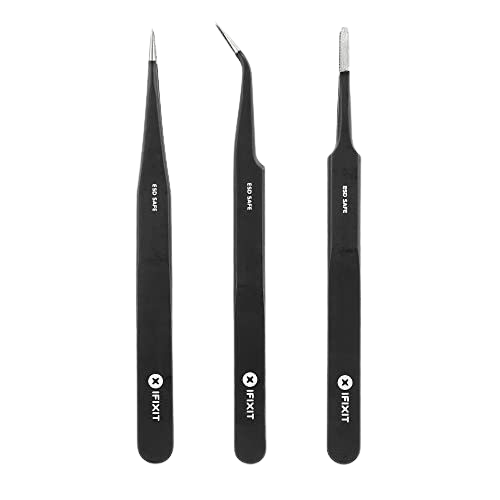Description
Antistatic tweezers play a crucial role in the delicate process of delidding and reassembly of CPUs. Here’s why they are used and at what stages of the process:
Preventing ESD damage: Electrostatic discharge (ESD) can cause irreparable damage to sensitive electronic components like CPUs. Antistatic tweezers are designed to dissipate static electricity safely, reducing the risk of ESD damage to the CPU during handling. This is particularly important when working with delicate components like the CPU die.
Precision handling: Delidding and reassembly require precision and care to avoid damaging the CPU die or other components. Antistatic tweezers provide a controlled grip, allowing for precise manipulation of small components such as the CPU die and tiny surface mount components on the CPU substrate. Their fine tips enable users to handle components with accuracy and delicacy.
Avoiding contamination: Antistatic tweezers are typically made from materials that resist corrosion and contamination. This helps prevent any foreign substances from transferring onto the CPU die or other sensitive components, ensuring optimal performance and longevity of the CPU.
Improving accessibility: Some components within the CPU package may be difficult to reach or manipulate with fingers alone. Antistatic tweezers provide an extended reach and a more stable grip, making it easier to access and handle these components during the delidding and reassembly process.
Maintaining cleanliness: Antistatic tweezers are often cleaned and maintained to ensure they remain free from dust, oils, or other contaminants that could potentially transfer onto the CPU components. This helps maintain a clean working environment and reduces the risk of introducing debris that could affect the CPU’s performance.


Reviews
There are no reviews yet.